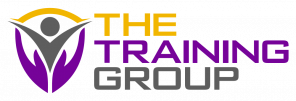Theories, principles and models of curriculum development
Curriculum development is a crucial process that is essential for the effective delivery of education. It involves a systematic approach to designing and delivering educational programs that meet the needs of students and stakeholders. This article provides a comprehensive overview of curriculum development, including the curriculum, stakeholders, programme models, influences, the hidden curriculum, process, and product models, as well as the spiral and linear models.
The curriculum is the set of courses and activities that students are required to complete to achieve their learning objectives. It is the blueprint for a successful educational program that ensures that the content, delivery methods, and assessments align with the learning outcomes. The curriculum is shaped by various stakeholders, including students, teachers, parents, policymakers, and employers. These stakeholders play an essential role in curriculum development, as they provide feedback and input that helps to shape the educational program.
Programme models are different approaches to curriculum development that provide a framework for designing and implementing educational programs. The three main types of programme models are subject-centered, student-centered, and problem-centered. Subject-centered models focus on the content of the curriculum and are structured around specific disciplines such as English, maths, or science. Student-centered models emphasize the learner’s needs and interests, while problem-centered models aim to teach students how to solve real-world problems.
There are several factors that influence the development of a curriculum, including the needs of students, teachers, and employers, as well as the requirements of regulatory bodies. To ensure that the curriculum is relevant and effective, it is essential to conduct a needs analysis to identify the knowledge, skills, and attitudes that students need to acquire.
The hidden curriculum refers to the unintended lessons that students learn through their interactions with the education system. These lessons are not explicitly taught in the classroom, but they are embedded in the school culture, social interactions, and policies. The hidden curriculum can have a significant impact on students’ values, beliefs, and attitudes, so it is essential to be aware of its existence and to address any negative aspects.
Process and product models are two approaches to curriculum development that differ in their focus and structure. Process models emphasize the steps and procedures involved in designing and implementing a curriculum, while product models focus on the end product or outcome of the process. Both models are important in curriculum development, as they provide different perspectives on how to create an effective educational program.
The spiral model is a cyclical approach to curriculum development that emphasizes continuous improvement and refinement. This model involves regular evaluations of the curriculum and incorporates feedback from students, teachers, and other stakeholders to make necessary modifications. The spiral model is highly adaptable and flexible, making it an excellent choice for rapidly changing fields or emerging industries.
The linear model is a more traditional approach to curriculum development that follows a sequential process from planning to implementation to evaluation. This model is less flexible than the spiral model, but it is effective in situations where the content and structure of the curriculum are well-established and unlikely to change significantly.
In conclusion, curriculum development is a vital process that requires careful consideration and planning. It is essential to involve all stakeholders in the process, to conduct a needs analysis, and to be aware of the hidden curriculum. Programme models, process and product models, as well as the spiral and linear models, provide frameworks for developing an effective curriculum. Understanding the principles and models of curriculum development is crucial for trainee teachers as they prepare to enter the field of education.
Further reading:
Academic Articles:
-
Marsh, C. J., & Willis, G. (2007). Curriculum: Alternative approaches, ongoing issues. Pearson Education.
-
Stenhouse, L. (1975). An introduction to curriculum research and development. Heinemann Educational Books.
-
Tyler, R. W. (1949). Basic principles of curriculum and instruction. University of Chicago Press.
Online Articles:
-
Education Scotland. (2021). Curriculum development. https://education.gov.scot/education-scotland/scottish-education-system/policy-for-scottish-education/policy-drivers/cfe-(building-from-the-statement-appendix-incl-btc1-5)/Curriculum%20development
-
TeachThought Staff. (2018). What is curriculum development? https://www.teachthought.com/education/what-is-curriculum-development/
-
UNESCO. (n.d.). Curriculum development. https://en.unesco.org/themes/curriculum-development
Videos:
-
Edutopia. (2014). Understanding by design: An introduction. https://www.youtube.com/watch?v=Q50YUOiDnBw
-
Harvard Graduate School of Education. (2013). Curriculum development. https://www.youtube.com/watch?v=otdYXLyOKc4
-
Learning Scientists. (2018). Curriculum development. https://www.youtube.com/watch?v=80Oo_gP4jOg



